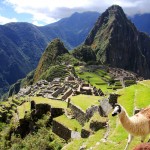Great Barrier Reef, Australia – On Knife Edge (07.06.15)
The jury is out on whether this has been a good or bad week for the earth’s largest living thing – the Great Barrier Reef.

On the one hand a draft decision on 30 May 2015 from UNESCO recommends that the 2,300km ecosystem should remain off the endangered list.
On the other, environmentalists, scientists and the people of Australia continue to worry that the very existence of the eco-system that sustains up to 3,000 reefs and coral cays, 900 islands and 600 varieties of hard and soft coral is under threat.
The Australian Government has its work cut out. Safeguarding the 344,400sq kms of coral sea means making sure that Australia’s industry, shipping and farming have as low an impact as possible. Protecting such a vast living organism, made up of billions of coral polyps – and visible from space – is a heavy responsibility. Not least because of the prolific diversity of vulnerable and endangered species: more than 1,500 fish species, 70 sea snake species and 30 species of whales, dolphins and porpoises. Not to mention 15 species of sea grass, 6 species of sea turtle and over 125 species of shark, skate and stingray.

So magnificent is the Great Barrier Reef that the international tourism industry has also become a major stakeholder. Its magnetic pull generates over A$5-6 billion for the industry from 2 million visitors annually.
The size of it takes your breath away, and whether viewing parts of it from the air, sea or ocean floor you will be astounded at how huge every living organism appears to be. The first time I snorkelled over the Outer Barrier Reef I saw giant clams the size of cars and coral curtains stretching away like multi-story car parks.
The UN Report however, does still firmly highlight that the Great Barrier Reef’s ‘overall outlook is poor’, threatened as it is by climate change, poor water quality and coastal developments.

While climate change is a global issue, poor water quality is a local issue. And keeping the natural marine park waters ‘as clear as day’ must remain at the forefront of any environmental planning. For example even during the peak rainy season (November-April), when visibility is at its lowest, you can still see up to 60 metres underwater at the Outer Reef.
Tourism must, as ever, act as a protector. When combined with a strong and resourceful local political authority, the result can be far reaching and effective. UNESCO, although not condemning the reef to the ‘Endangered List’, is very much keeping it on what the Australian WWF calls its ’Probation’ list.

Equally the UN insists that while the Australian Government has ‘made huge steps in the last 12 months’ it must ’rigorously implement all of its commitments’ as published in its Reef 2050 Long-Term Sustainability Plan.
We are all part of the jury on how this World Wonder remains intact. If you are in Australia, I recommend that you take the opportunity to see it for yourself.
Who knows how long it will survive?



















